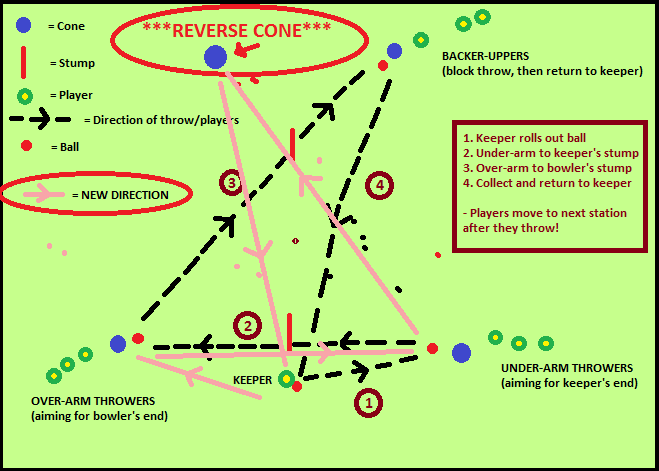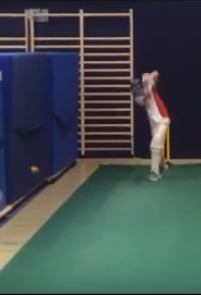 This week has been one of my favourite of the whole coaching year – the Twenty20 Academy Camp.
This week has been one of my favourite of the whole coaching year – the Twenty20 Academy Camp.
Players train and play matches every day within their same team unit. The coaches have a golden opportunity, to coach all the intangible skills – ones that can only be honed in competitive matchplay:
- TEAMWORK – Working to be more than the sum of your parts.
- STRATEGY – Learning how to set proper fields, plan an innings and get the best out of your game.
- RESILIENCE – Instead of 1 or 2 star players, all 11 are very able. Our players learn how to cope, in an environment where there is no let up in pressure.
- BIGGER PICTURE – Getting out of your own bubble, and applying yourself to the game situation.
Some players have to learn these lessons the hard way. They are good players, who at their club. This can blind them to their flaws. But sometimes this shock – of realising they aren’t perfect – is the best thing that can happen to them.
If a good player is falling short in these categories, it will affect their performance when the competition gets tougher. They need bringing up, but how you bring them up is difficult.
Below are some of the most common “elephants in the room”, that we try to address in talented young players.
It’s not all about you
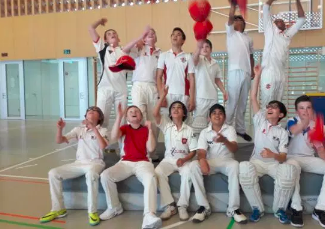
Picture this scene. The best player in your team has been made captain.
Senior player has a good day “on paper”. Scores a 50 and takes 3 wickets in an 8 over spell. The scorecard suggests he wasn’t supported by his teammates. A string of single-figure scores, and only 1 or two bowlers adding to the wickets column.
What conclusions can be drawn?
There are two ways to look at this:
- “The rest of the team needs to step up. One player can’t carry the team in every match”.
- “Why aren’t the rest of the team performing? Are they being managed properly”?
Both statements are valid.. But what needs to change, to get better results?
Scrutinise this scorecard once more – this time a bit more forensically. When have the other players come into the attack? Some have been hit for a few runs, but were they on a hiding to nothing? Have they been treated as an afterthought?
Sometimes the best players develop a mindset that they have to take all the responsibility. Sometimes they are just self-absorbed. But you need to find a way of breaking this cycle.
A team will only thrive if all 11 players are engaged and valued. And this is a tough lesson to hammer home to competitive children (and indeed, adults).
But it needs to be done!
Playing to the finish line

If a game if 20 overs a side, you need to commit for the full 20 overs! It’s amazing how often teams don’t….
The final 5 overs can feel like an eternity, when the fielding team has “switched off”. Once you take your foot off the pedal, you can’t put it back on!
At performance level, complacency like this is always punished. There are still lower order players who can smash a bad ball (or even a good ball). The number 10 may well normally open the batting for their club. On the other side, change bowlers still expect to take wickets. There is no bowler you can relax against.
Players get tired and it would be silly to ask for perfection. But there needs to be a certain intensity throughout. Often a small setback (a simple misfield) is a “trigger” that sucks the energy out of the whole team. This is where they need team spirit and resilience. It’s difficult to attain.
But you have to try!
Big fish in a small pond….

“The difference between you – a very good player – and a great player (county standard), is”….
When I say you a player is “good”, I make sure it doesn’t go to their head with this clause.
Being “good” is….
- RELATIVE – To age group.
- CONDITIONAL – On keeping up with the best of your peers.
- NOT ENOUGH – Next year will be harder. Adult cricket harder still. If you want the prestige, you have to go further.
Being “great” is….
- INFLUENTIAL – They bring out the best in their teammates, instead of pursuing their own stats (potentially at the expense of others).
- PROFESSIONAL – They don’t rely on skill alone, but prepare in the right way every time. Nothing is left to chance!
- HUNGRY – I’m going to perform to the best of my ability every time, no matter how important the game. Be relentless. Churn out results.
It is vital to make this distinction. Firstly, it will explain the reactions of some players when you give mild constructive criticism. Some players simply aren’t used to any negative feedback (“me???”).
Too many players become good then settle. They perform one time and it goes to their head. Their progress flatlines. Don’t let them sell themselves short.
It’s not fun, but it needs to be done.
No excuses
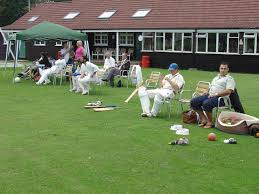
I’ve lost count of the number of times I’ve heard, “but the pitch was…”, in the last few weeks.
When good players go down this road consistently, it’s a bad sign….
I make sure to ask the batter, “is there anything else you could have done”, when they think they’ve been unlucky? My aim isn’t to be damning (we all make mistakes!), but to emphasise that you shouldn’t reach for the excuse by default. “Only say it’s unlucky if you have done everything in your capacity to prevent it”.
Of course, it is possible to be unlucky. But I hate when players develop a self-pitying mindset.
I have written extensively about how important it is to coach the process and not the result. We coach technique for moments when the ball does something unexpected. When the conditions don’t allow us to rely on hand-eye coordination alone. When you get a tough break. For when you need it!!
Look at yourself first. Then the conditions second.
You might fail….
….and fail again! But this doesn’t mean you are a failure! How are you going to respond.
When a good player isn’t used to getting low scores, or being smashed, they take it badly. This is down purely to not being used to the challenge. All the evidence has pointed one way up to that date.
The benefit of our Academy camp is there’s always another game around the corner. A chance to lick your wounds and prove your ability again. Are you going to stand up and be counted again? Or “go missing” for the rest of the week?
We experienced both. Instead of intervening after every error, our coaches allowed the player to sulk, then reflect. Their response would dictate whether they had learned from the experience.
There will be days where you don’t feel you match up. But you can be resourceful. Find new methods to cope. Strengthen your resolve. Setbacks don’t just make you more aware of your flaws….they teach you lessons you were never aware existed before.
There is always another level higher than you. So keep trying to move forward.
Finally….look at yourself!

Coaches are often in denial that they have flaws as well. They get brushed off, self-justified (“that’s my style”) or ignored altogether!
I wrote before about how we need to make ourselves better in every department.
I know that when I’m under pressure, I tend to….
- TALK TOO FAST – sometimes about 1000 words per minute!
- INTERVENE TOO MUCH – I struggle to let small things go.
- LOOK TOO SERIOUS – I don’t hide my irritation well enough.
- OVER-DO NEGATIVE FEEDBACK – Sometimes I labour a point too much.
- STOP DELEGATING AND TRUSTING COLLEAGUES – I put way too much pressure on myself.
This is where it is useful to work with a collague who is different to you. Together you can tick off all the qualities required. And when one of you is struggling, the other can step up.
Some coaches struggle to understand that their “style” isn’t compatable with every single child. We don’t always realise that we need to change to the situation. Don’t come up with excuses. Critique yourself.
We aren’t perfect.
RELATED ARTICLES
BE BETTER: You are only as good as your last session
MISSING PIECES: Why good batters and bowlers doesn’t mean good “cricketers”


 I enter this manually, using a worksheet I created. Using this sheet, I can also record:
I enter this manually, using a worksheet I created. Using this sheet, I can also record: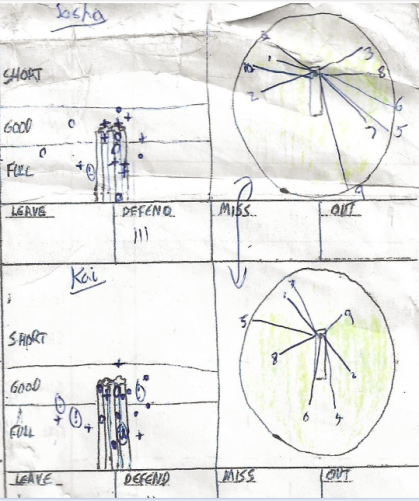
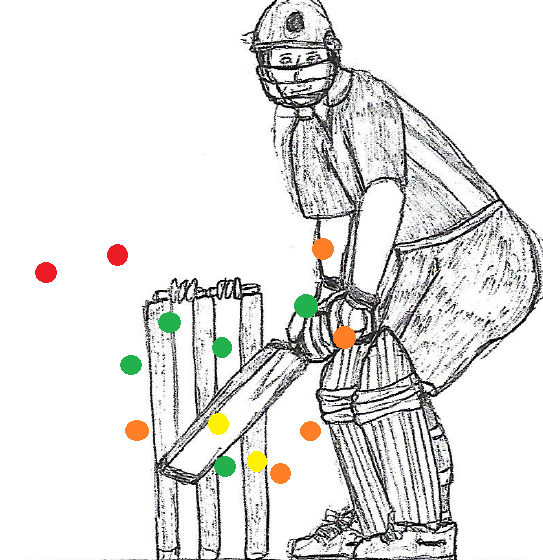
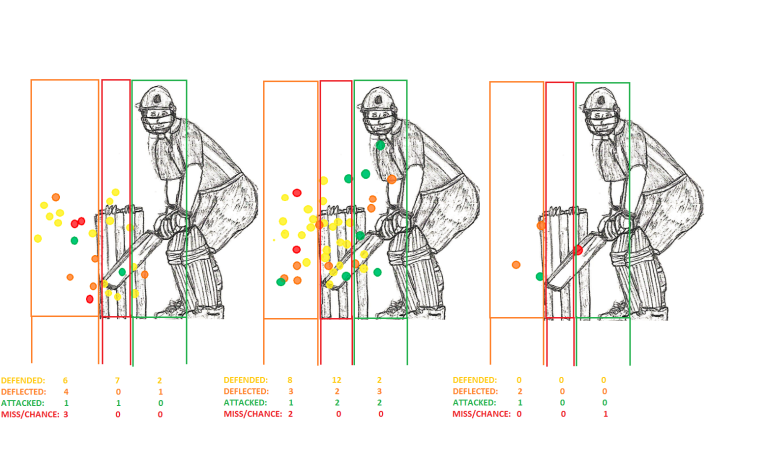




 **COACH TIP – wagon wheels are often a great way to spot this kind of player. Look to see if a batter is relying too heavily on hitting the ball through the covers/extra-cover (see image)**
**COACH TIP – wagon wheels are often a great way to spot this kind of player. Look to see if a batter is relying too heavily on hitting the ball through the covers/extra-cover (see image)**


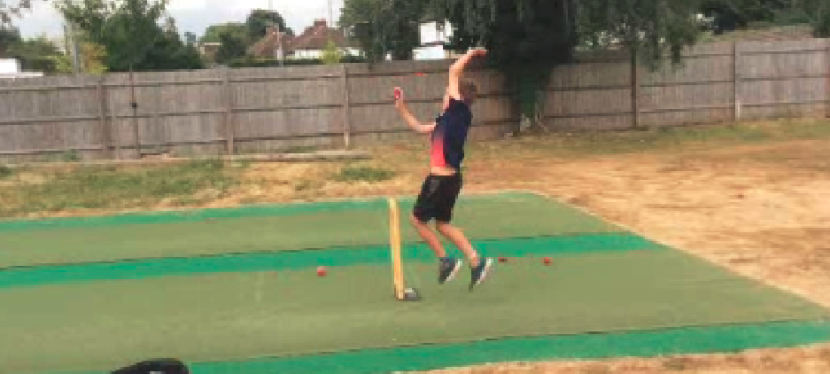
 Lots of players miss more balls outside the off-stump than they would like!
Lots of players miss more balls outside the off-stump than they would like!


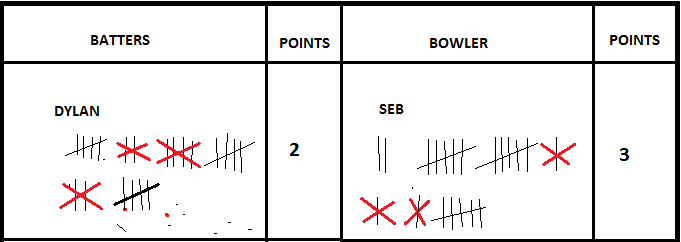



 The coaching manual has evolved hugely in recent years. There are now more resources to draw on, and skills to teach that would be considered preposterous even 10 years ago.
The coaching manual has evolved hugely in recent years. There are now more resources to draw on, and skills to teach that would be considered preposterous even 10 years ago.


 In general, batters don’t want to block the cricket ball.
In general, batters don’t want to block the cricket ball.
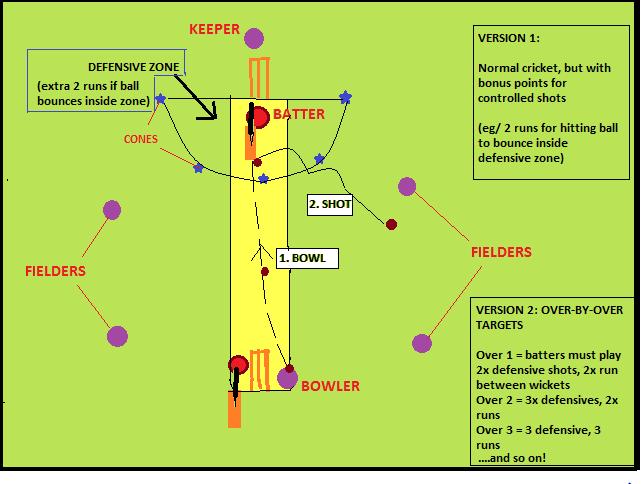
 Cricket can be humiliating! The game has a special way of making your failures feel intensely public….it feels the whole world is looking at you.
Cricket can be humiliating! The game has a special way of making your failures feel intensely public….it feels the whole world is looking at you.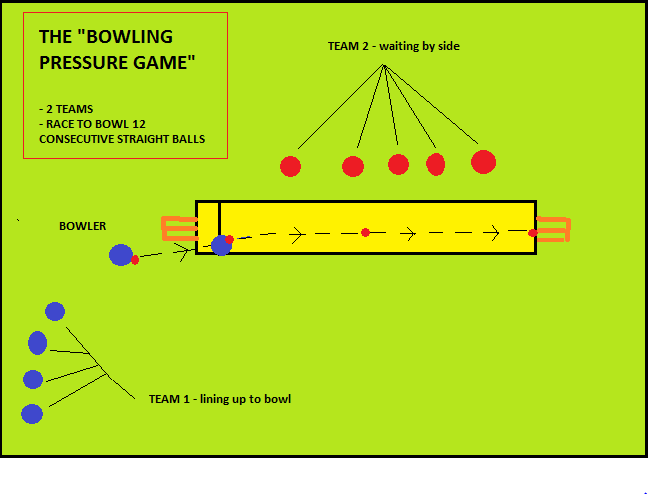
 All players deserve some level of ownership over their game. At the end of the day, this is their hobby, and they need to have reasons for playing.
All players deserve some level of ownership over their game. At the end of the day, this is their hobby, and they need to have reasons for playing.


 All coaches have their “go-to” drills – basically, an activity they continually come back to. One that consistently gets results or a guaranteed buzz from the group!
All coaches have their “go-to” drills – basically, an activity they continually come back to. One that consistently gets results or a guaranteed buzz from the group! 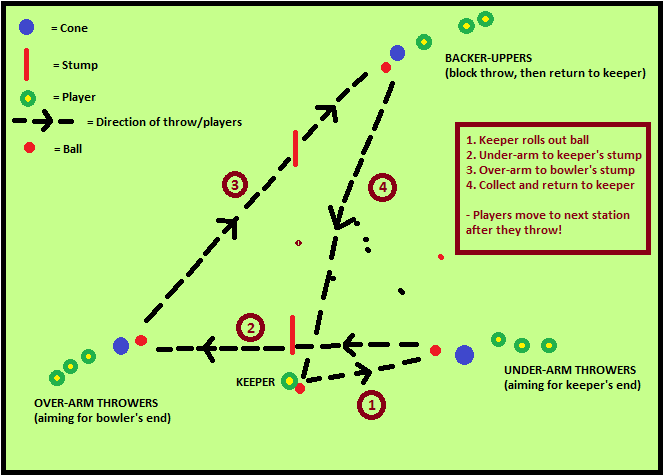
 We call this semi-circle the “No Go Zone”. All throwers must prevent the ball from bouncing inside the semi-circle.
We call this semi-circle the “No Go Zone”. All throwers must prevent the ball from bouncing inside the semi-circle.
